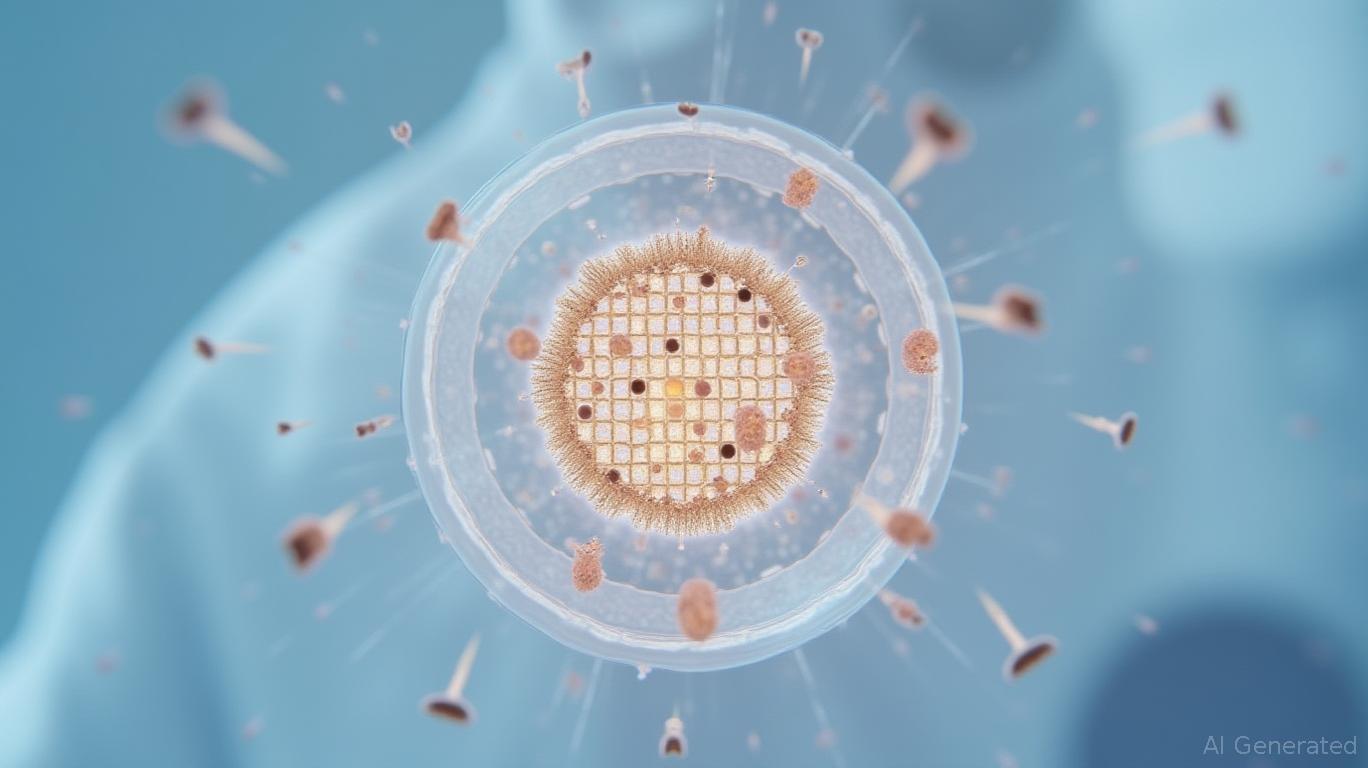Unlocking Value in Orthopedic Regeneration: The Carisma-OrthoCellix Merger and NeoCart's Path to FDA Approval
Harrison BrooksMonday, Jun 23, 2025 7:43 am ET
The biopharma sector is no stranger to high-risk, high-reward ventures, but the June 2025 merger between
### The Strategic Pivot: From Fibrosis to Cartilage Repair
Carisma's decision to pivot away from its macrophage-engineering programs in fibrosis and marks a stark shift in corporate strategy. While its prior assets, such as its liver fibrosis candidate, remain under a contingent value rights (CVR) , the merger channels resources toward OrthoCellix's NeoCart®, an autologous cartilage implant in Phase 3 readiness. This focus aligns with a clear market need: cartilage repair therapies lack truly transformative options, with current treatments like microfracture and chondroplasty offering only temporary relief.

### NeoCart®'s FDA-Backed Pipeline: A Critical Advantage
NeoCart®'s strength lies in its scientific and regulatory progress. The therapy uses patient-derived cells cultured on a proprietary scaffold to regenerate knee cartilage, a process validated in prior trials. While an earlier Phase 3 trial (NCT01066702) failed to meet its primary endpoint against microfracture, subsequent FDA discussions led to a revised trial design, which the agency concurred with in December 2022. This new Phase 3 trial—comparing NeoCart to chondroplasty in patients with 1–3 cm² cartilage lesions—will now serve as the pivotal study for a Biologics License Application (BLA).
The FDA's prior granting of Regenerative Medicine Advanced Therapy (RMAT) designation in 2022 further accelerates the to approval, offering benefits like priority review and potential accelerated approval. With the Phase 3 trial slated to begin by late 2025, NeoCart® could be on track for an FDA decision as early as 2027, assuming positive results.
### Capital Structure: A Balanced Risk-Reward Equation
The merger's financial terms underscore a deliberate risk mitigation strategy. A concurrent $25 million private placement, led by Ocugen and other investors, ensures that NeoCart's Phase 3 trial can proceed without requiring additional funding from Carisma's existing shareholders. Post-merger, OrthoCellix's stockholders and financing participants will hold ~90% of the combined entity, while Carisma's legacy shareholders retain ~10%—a structure that aligns incentives for advancing NeoCart®.
The combined company's projected $60–65 million cash runway post-financing (including existing resources) supports operations through trial completion, reducing near-term dilution risks. Meanwhile, the CVRs attached to Carisma's former programs act as a “hedge,” though the primary value driver remains NeoCart®'s commercialization.
### Risks and Considerations
The deal is not without pitfalls. The Phase 3 trial's success hinges on demonstrating superiority over chondroplasty—a hurdle that tripped up the prior trial. Additionally, regulatory scrutiny of cell therapies remains stringent, and manufacturing complexities at OrthoCellix's new GMP facility could delay timelines. Investors must also weigh the ~10% stake held by former Carisma shareholders, who may face dilution if the company requires future equity raises.
### Investment Takeaways: A High-Conviction Opportunity?
For investors willing to tolerate biotech volatility, OrthoCellix, Inc. presents a compelling risk-reward profile. Key positives include:
1. Late-Stage Asset: NeoCart®'s Phase 3-ready status and FDA alignment reduce developmental uncertainty.
2. Regulatory Tailwinds: RMAT designation and prior FDA concurrence lower approval hurdles.
3. Focused Capital Structure: The merger eliminates distractions, concentrating resources on a single, high-potential program.
The stock's 40% post-announcement rally reflects market optimism, but further upside hinges on Phase 3 initiation by year-end and early data reads. With a market cap of ~$150–200 million post-merger, the company's valuation appears reasonable if NeoCart® achieves even moderate commercial adoption.
### Conclusion: A New Chapter in Orthopedic Innovation
The Carisma-OrthoCellix merger is a masterclass in strategic focus—transforming two underperforming companies into a lean, mission-driven entity with a clear path to market. For investors seeking exposure to the regenerative medicine boom, this deal offers a rare chance to back a late-stage therapy with a defined regulatory timeline and a high unmet need. While risks remain, the alignment of science, capital, and execution makes OrthoCellix, Inc. a name to watch in the orthopedic space.
In a sector where patience is often rewarded, this merger could prove to be a pivotal step toward unlocking value in one of biotech's most promising frontiers.
Disclaimer: The news articles available on this platform are generated in whole or in part by artificial intelligence and may not have been reviewed or fact checked by human editors. While we make reasonable efforts to ensure the quality and accuracy of the content, we make no representations or warranties, express or implied, as to the truthfulness, reliability, completeness, or timeliness of any information provided. It is your sole responsibility to independently verify any facts, statements, or claims prior to acting upon them. Ainvest Fintech Inc expressly disclaims all liability for any loss, damage, or harm arising from the use of or reliance on AI-generated content, including but not limited to direct, indirect, incidental, or consequential damages.

Comments
No comments yet